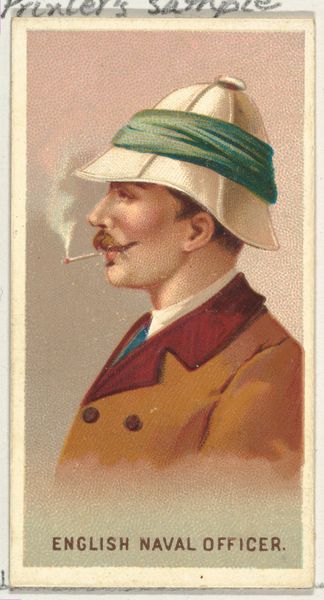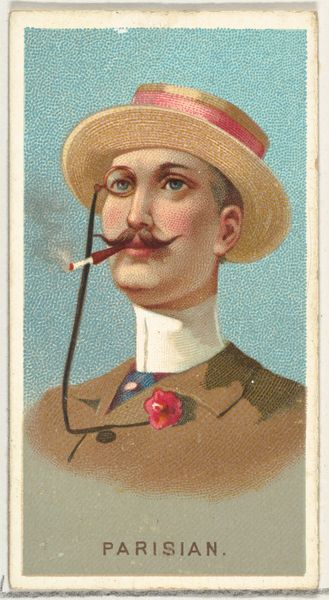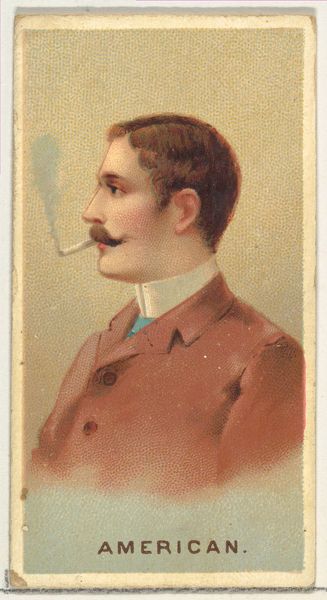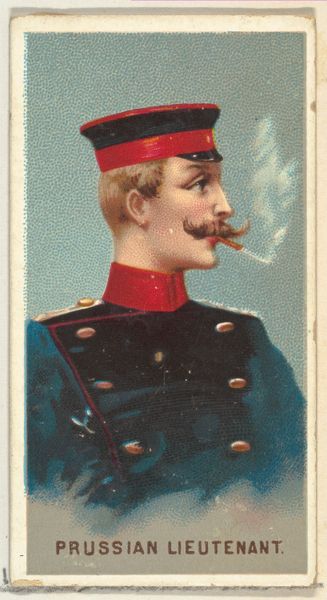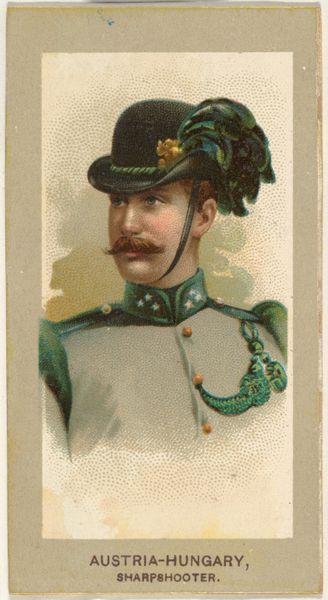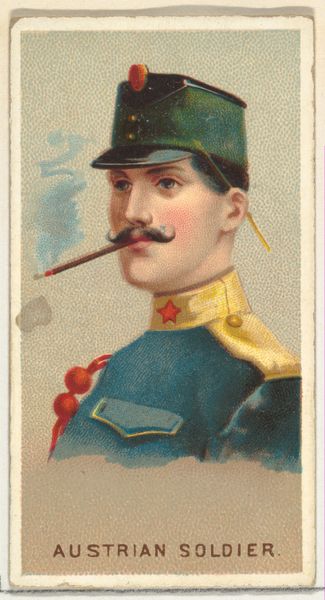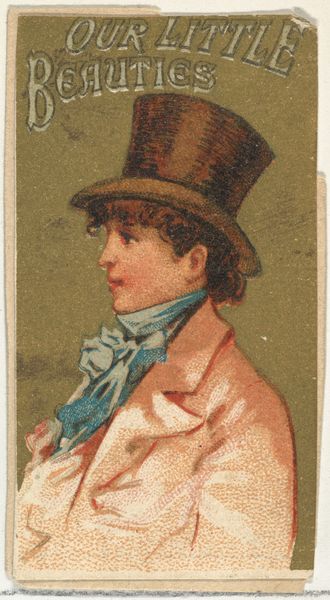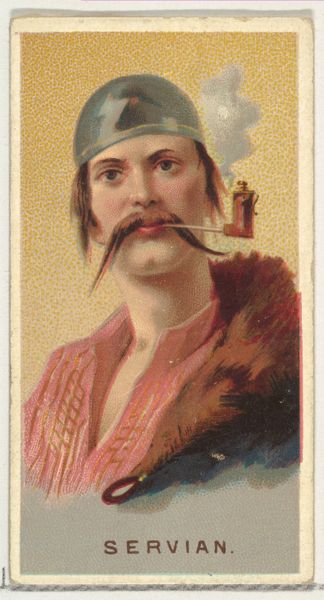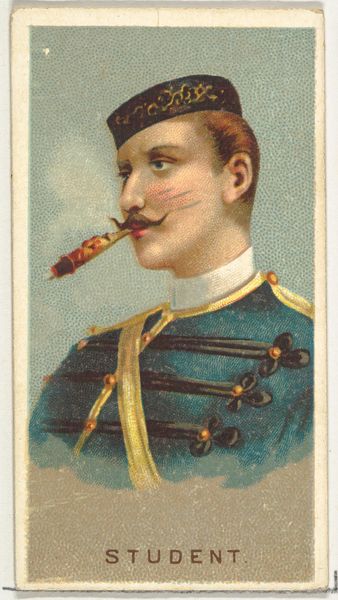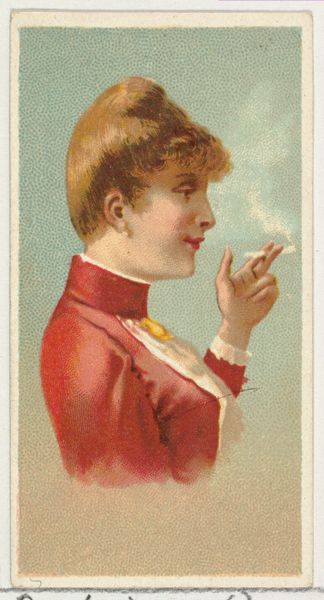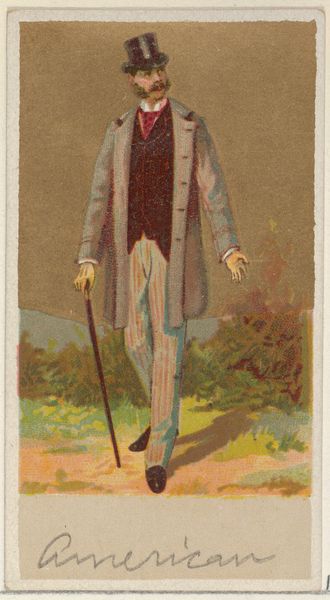
Englishman, from World's Smokers series (N33) for Allen & Ginter Cigarettes 1888
0:00
0:00
Dimensions: Sheet: 2 3/4 x 1 1/2 in. (7 x 3.8 cm)
Copyright: Public Domain
Curator: Here we have a lithograph print entitled "Englishman," dating back to 1888. It’s part of the "World's Smokers" series produced by Allen & Ginter, now residing at the Metropolitan Museum of Art. My immediate impression is one of satire; the artist clearly exaggerates this man’s features for comical effect. Editor: Indeed. The visual elements are intriguing; the vibrant colours belie the piece's purpose. It is crucial to acknowledge the exploitative context surrounding these now vintage collectables, and recognize their link to 19th-century commodity culture—specifically the marketing of tobacco through the visual reduction of identities to consumable types. Curator: Agreed, although the formalism displayed warrants examination. Note how the crisp lithographic lines render details like the check of his tweed suit, juxtaposed against a softer treatment of the skin. And the tension between the verticality of the top hat and the spiraling smoke is remarkable. Editor: However, to detach such aesthetic choices from the inherent socio-political motives would be a critical failure. The print’s Ukiyo-e influence reveals a selective exoticization. While appearing cosmopolitan in scope, its portrayal relies on established European colonial hierarchies and entrenched perceptions of class. The single monocle and elaborate sideburns play into caricature—exaggerated symbols of perceived Britishness to attract attention to the products on sale. Curator: That interplay you point to underscores how period stereotypes of British gentry became shorthand—recognizable visual cues in consumer marketing to signal certain product associations with luxury and sophistication. It works from established conventions. Editor: Exactly! But we should remember how consumer marketing created an "us" and "them", where viewers purchase access into the constructed superior lifestyle through product association—in this case via caricatured, yet distinctive stereotypes such as the Englishman and their symbolic accessories of pipe and fine tailoring. Curator: This layered understanding allows a far more complete engagement with visual artifacts such as "Englishman," seeing beyond superficial aesthetic judgements alone. Editor: Precisely. Attending to its artistic construction also compels viewers to confront these embedded complexities, fostering critical insight beyond the easily visible and instead revealing a richer, problematic story about the era and its power dynamics.
Comments
No comments
Be the first to comment and join the conversation on the ultimate creative platform.
